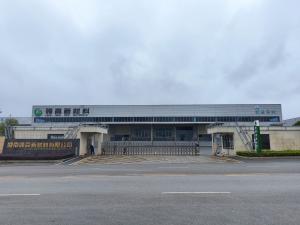Global Push for Sustainable Packaging: Bamboo and Molded Fiber Take Center Stage
CA, UNITED STATES, September 3, 2025 /EINPresswire.com/ -- In recent years, molded fiber packaging has emerged as one of the most promising alternatives to single-use plastics. Behind this innovation lies a critical raw material: bamboo pulp. As governments tighten regulations on plastics and consumers demand greener solutions, the synergy between bamboo resources and molded fiber technology is attracting global attention.
________________________________________
Bamboo as a Non-Wood Pulp Resource
Bamboo is often called the “second forest” due to its rapid growth cycle of just 3–5 years, strong regeneration ability, and minimal maintenance requirements. Globally, more than 80% of bamboo forests are located in Asia-Pacific regions, with India and China accounting for around 70% of the total bamboo forest area.
From a material perspective, bamboo contains:
• 57–65% cellulose
• 27–30% hemicellulose
• ~5% lignin
This chemical composition makes bamboo fibers highly suitable for pulping, comparable to hardwood fibers and superior to other non-wood alternatives such as rice straw or bagasse. For decades, bamboo pulp has been used in household paper, but its role is now expanding into packaging and molded fiber applications.
________________________________________
How Molded Fiber Packaging Works
The process of producing molded fiber packaging involves:
1. Pulping – Agricultural residues such as bamboo or sugarcane bagasse are turned into a fiber slurry.
2. Thermoforming – The slurry is poured into molds and pressed at high temperature (170–220°C) and pressure (60–70kN).
3. Finishing – The formed products are trimmed, optionally coated for water/oil resistance, and packed.
Although energy intensive, innovations such as in-house pulping integration can reduce production costs by 20–30%. This would bring molded fiber packaging closer to price parity with plastics, making large-scale adoption more feasible.
________________________________________
Why Molded Fiber Is in Demand
The rise of molded fiber is driven by three factors:
• Regulatory push – Many countries have restricted or banned single-use plastics.
• Consumer awareness – Shoppers prefer eco-friendly packaging that looks and feels sustainable.
• Versatility – Molded fiber can replace rigid plastics in food service, FMCG, cosmetics, pharmaceuticals, and electronics.
Unlike PLA bioplastics, which degrade poorly in hot and humid climates and are hard to separate from conventional plastics in recycling, molded fiber products decompose naturally and are easier to recycle.
________________________________________
Challenges and Opportunities
Despite its promise, bamboo-based molded fiber packaging faces several challenges:
• Higher transportation and storage costs compared with wood pulp.
• High ash and silicon content in bamboo, which can affect pulp recovery processes.
• Limited ability to replace liquid packaging (e.g., bottled water).
However, technology is rapidly evolving. Barrier coatings and fiber refining processes are being developed to extend molded fiber use from fast food packaging to retail-ready containers with longer shelf life.
________________________________________
The Global Outlook
China, with its vast bamboo resources and advanced automation capabilities, has taken the lead in scaling molded fiber production. India is also emerging as a major hub, focusing on widely accepted products such as plates and trays, while gradually moving into pharmaceuticals and electronics packaging.
Globally, the molded fiber packaging market is projected to reach multi-billion-dollar scale, offering significant opportunities for manufacturers, brands, and investors. For factories with bamboo pulp capacity, the integration into molded fiber production could unlock new growth, aligning profitability with sustainability.
________________________________________
Conclusion
Bamboo pulp and molded fiber represent a powerful combination for the post-plastic era. With strong government support, technological innovation, and increasing consumer acceptance, this sector is set to redefine packaging for industries worldwide.
As one manufacturer put it: “Molded fiber is not just about replacing plastic. It’s about building a sustainable cost model that works for the planet and the economy.”
Leadgoalcnbamboo Manufacturing Advantage
As demand for sustainable molded fiber solutions continues to rise, our factory has been at the forefront of developing eco-friendly bamboo fiber packaging. With over a decade of experience in pulp molding, we specialize in producing high-quality packaging products that serve both food and retail industries.
Leadgoalcn main product categories include:
Fresh Food Trays – sturdy, stackable, and ideal for fresh produce and chilled goods
Produce Trays – designed for fruits and vegetables, ensuring both protection and shelf appeal
Plates – biodegradable alternatives to disposable plastic or foam plates
Food Containers – suitable for take-out, delivery, and retail packaging
Cup Trays – convenient and sustainable holders for beverages
ZHANG JUN SHENG
Hunan Lead Goal New Materials Co., Ltd.
+86 195 2094 1008
email us here
Visit us on social media:
LinkedIn
Instagram
Facebook
YouTube
A new force in eco-friendly packaging--Hunan Lead Goal New Materials Co., Ltd.
Legal Disclaimer:
EIN Presswire provides this news content "as is" without warranty of any kind. We do not accept any responsibility or liability for the accuracy, content, images, videos, licenses, completeness, legality, or reliability of the information contained in this article. If you have any complaints or copyright issues related to this article, kindly contact the author above.

